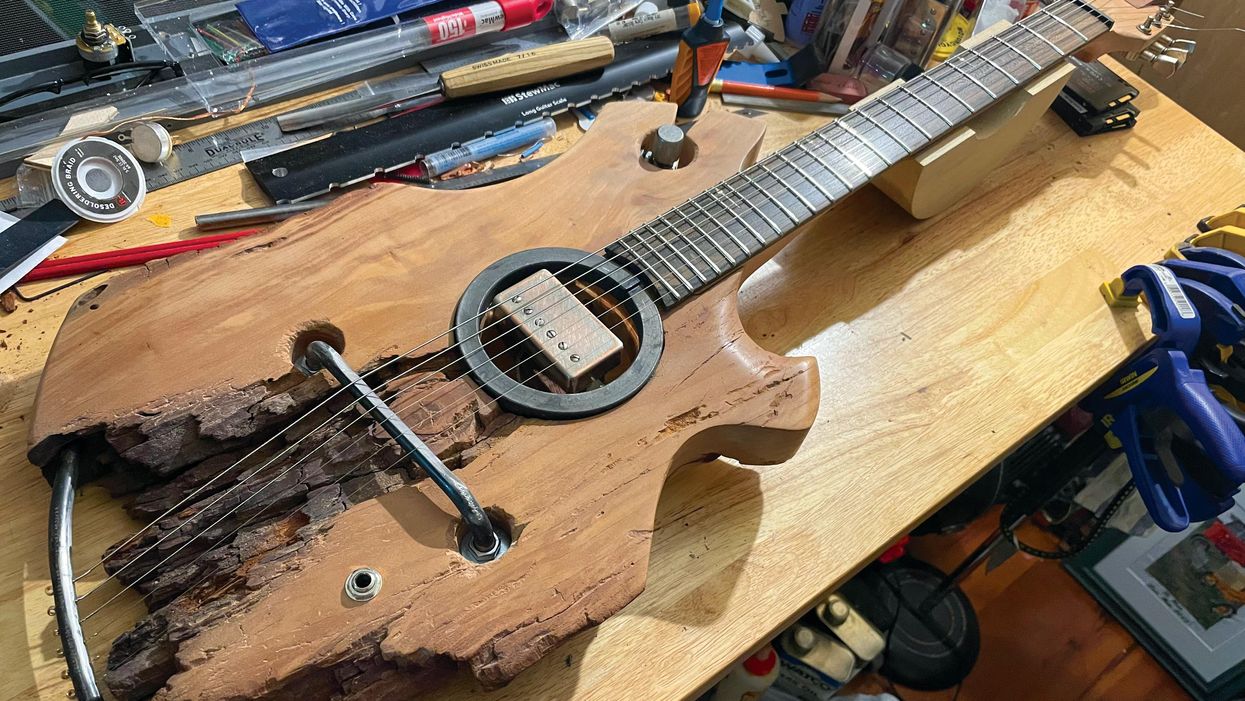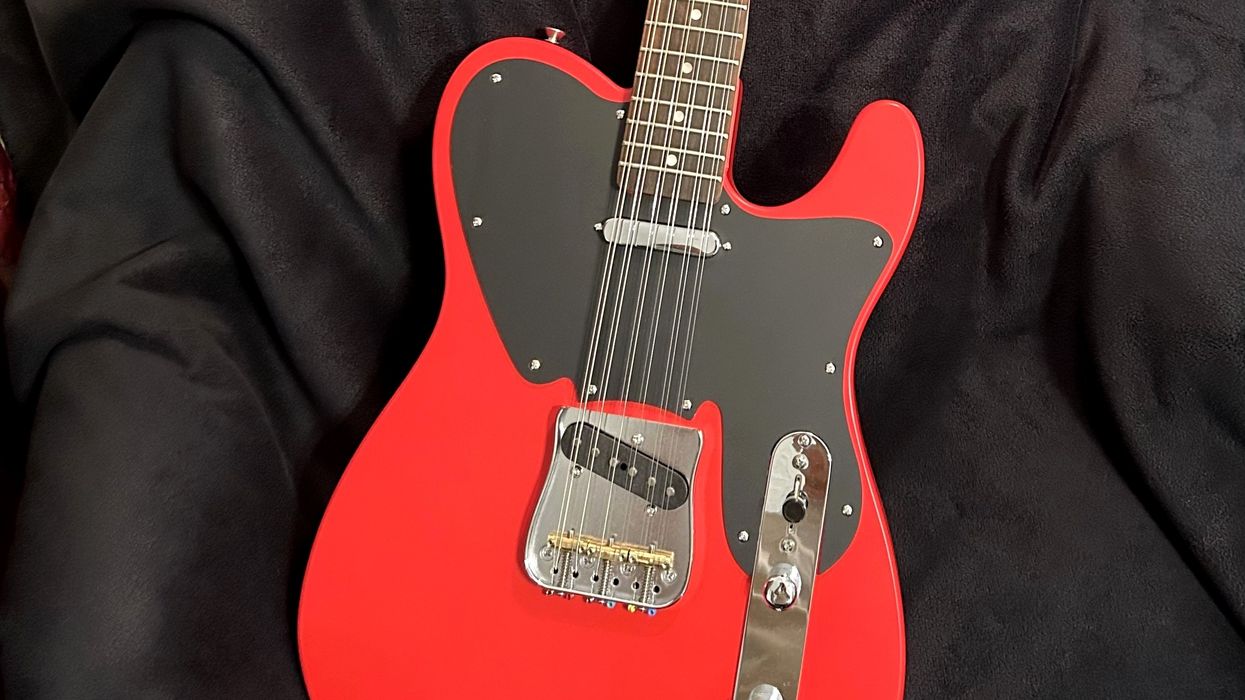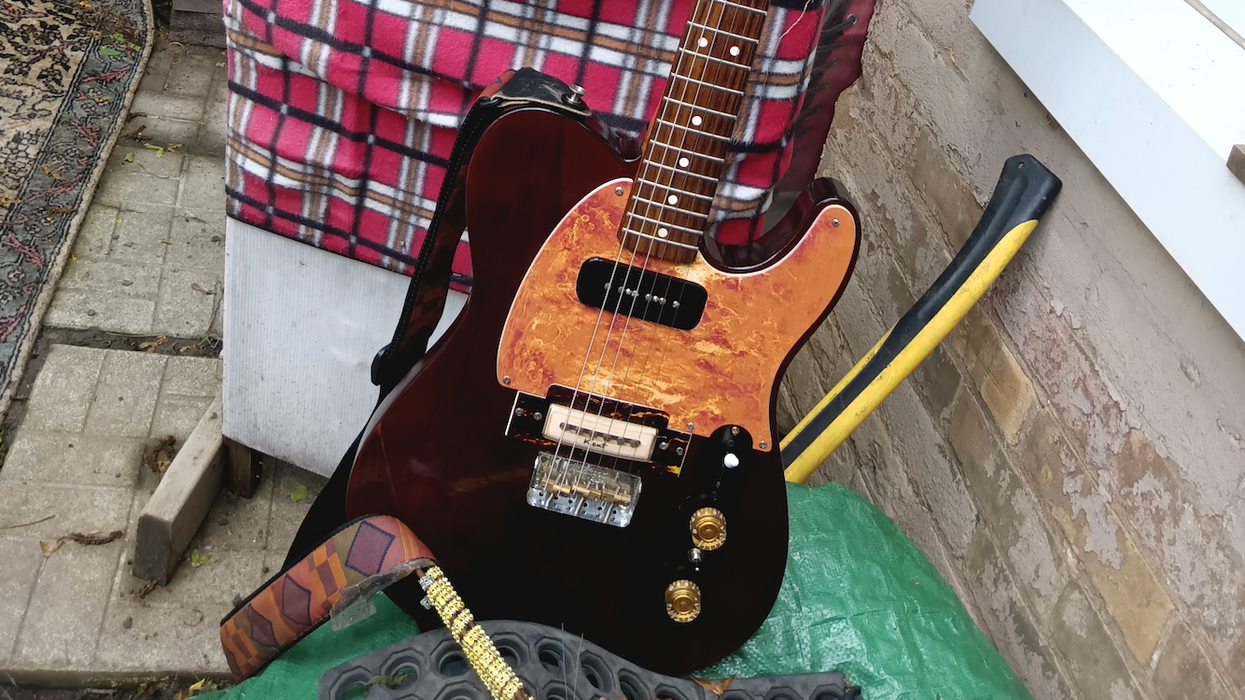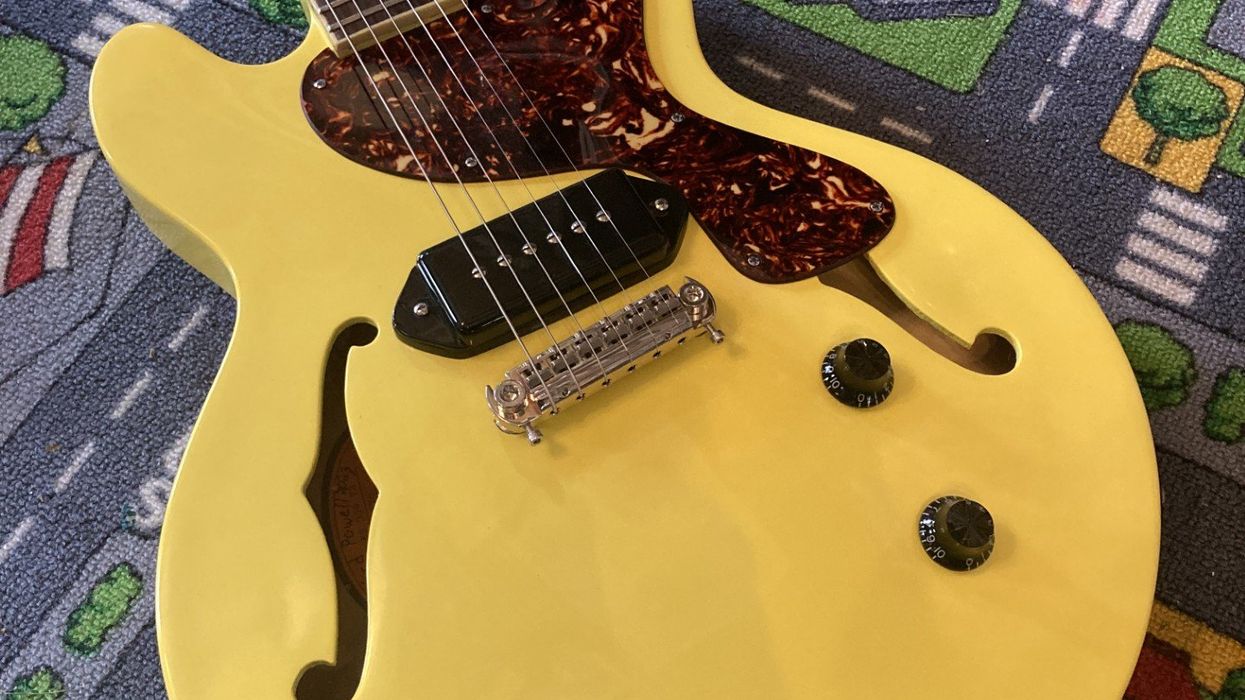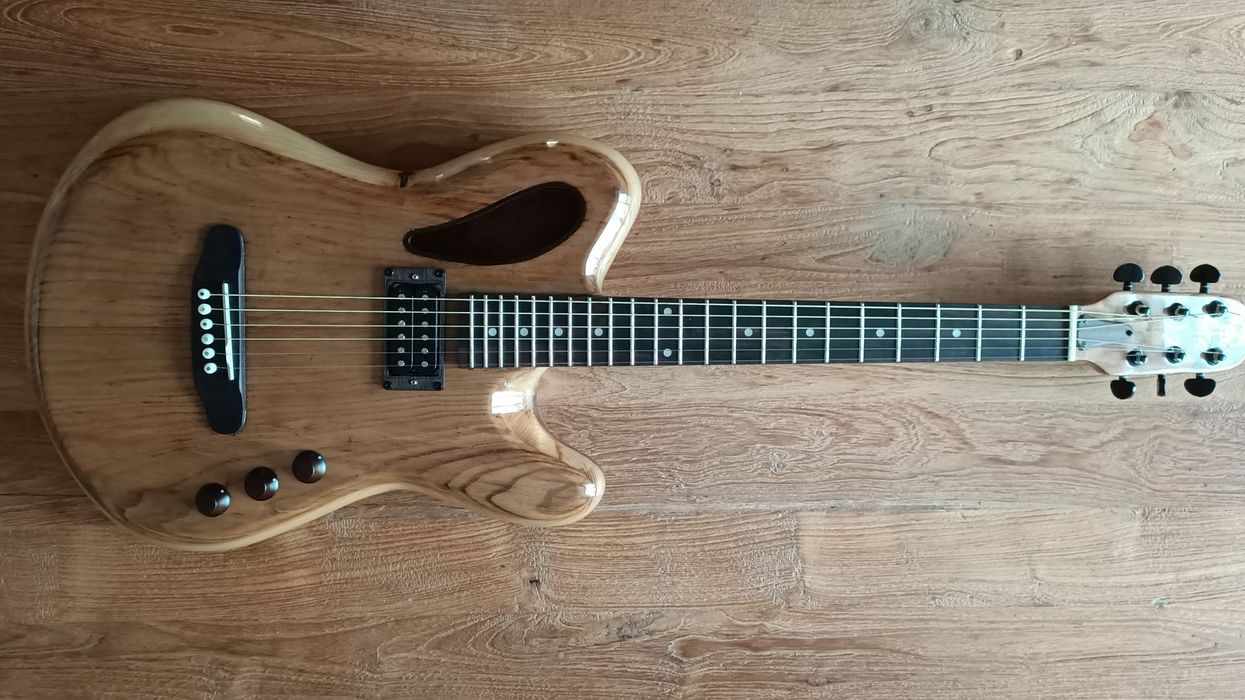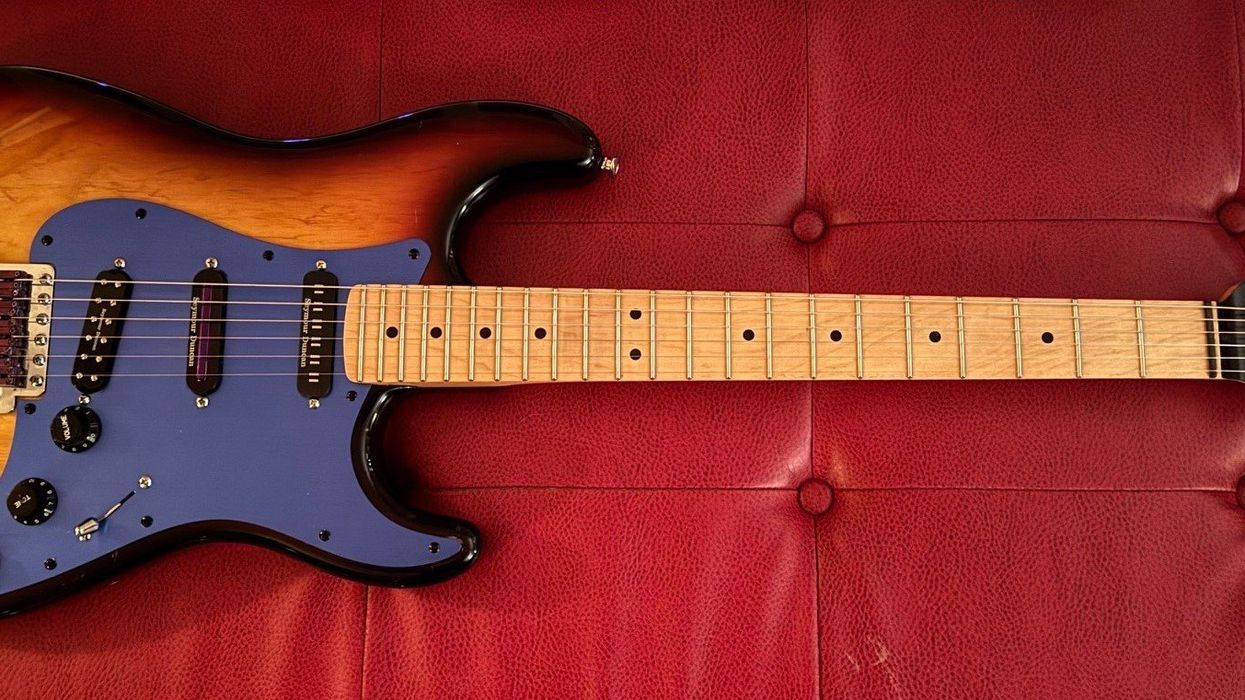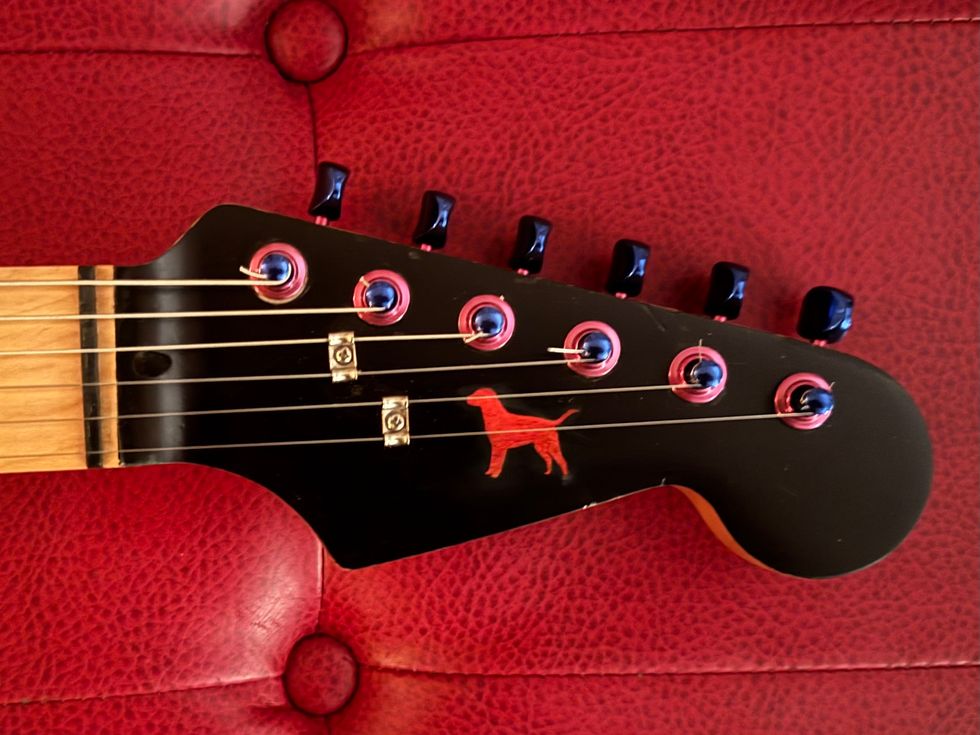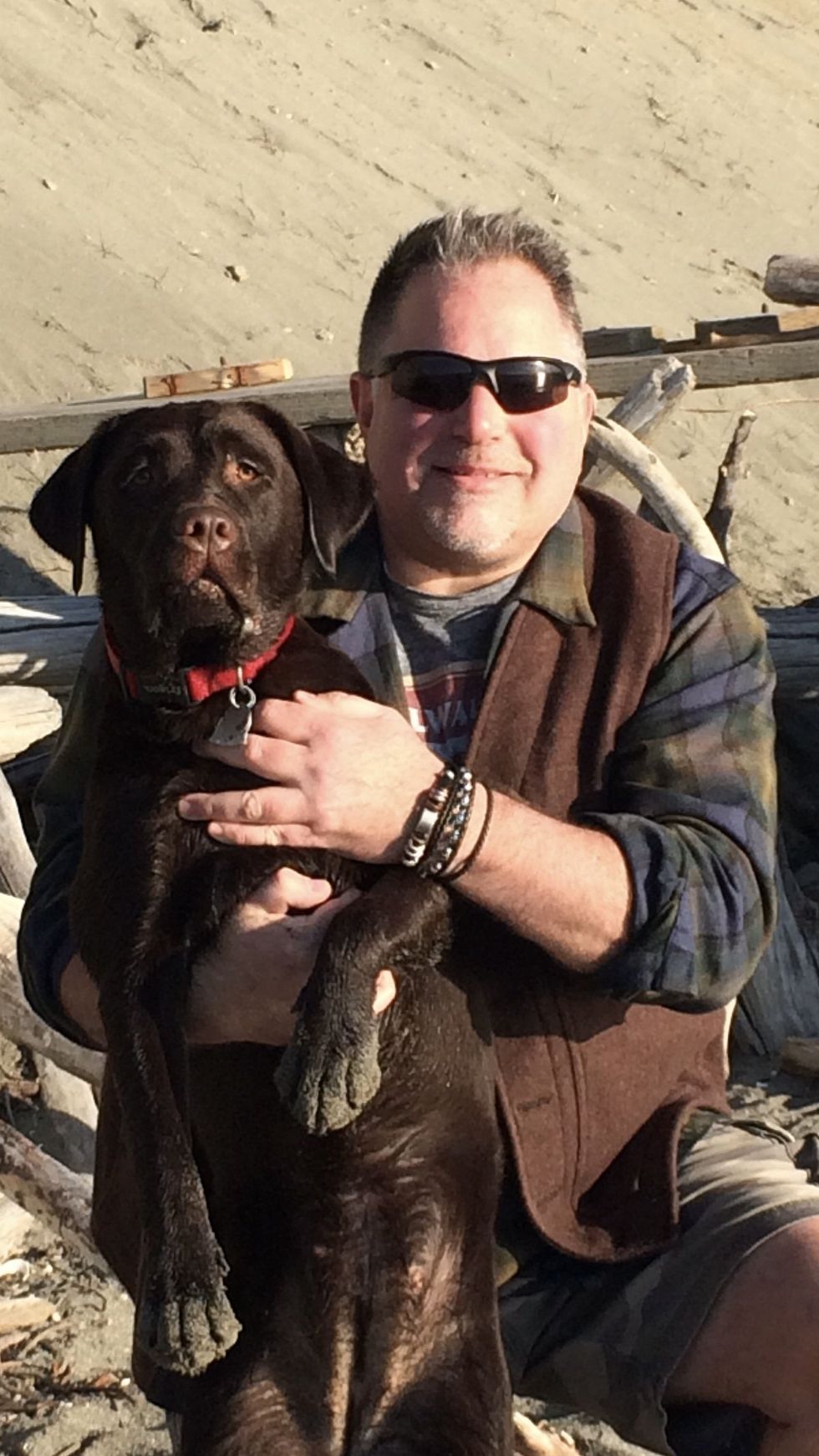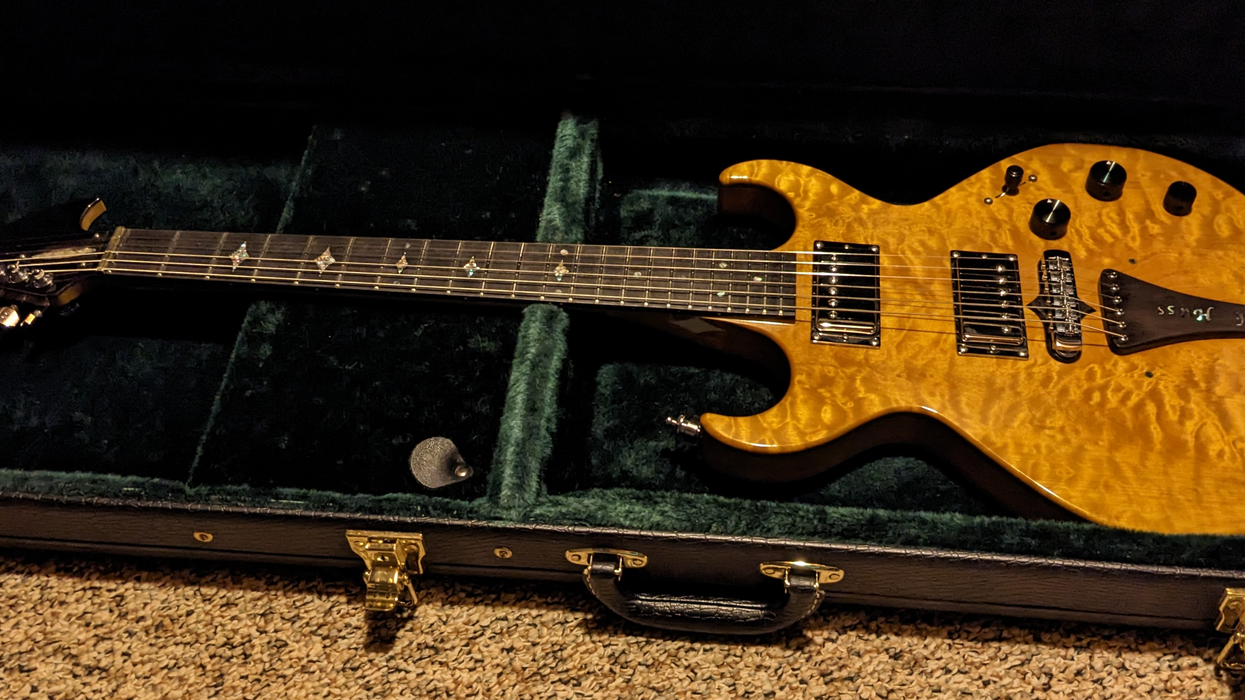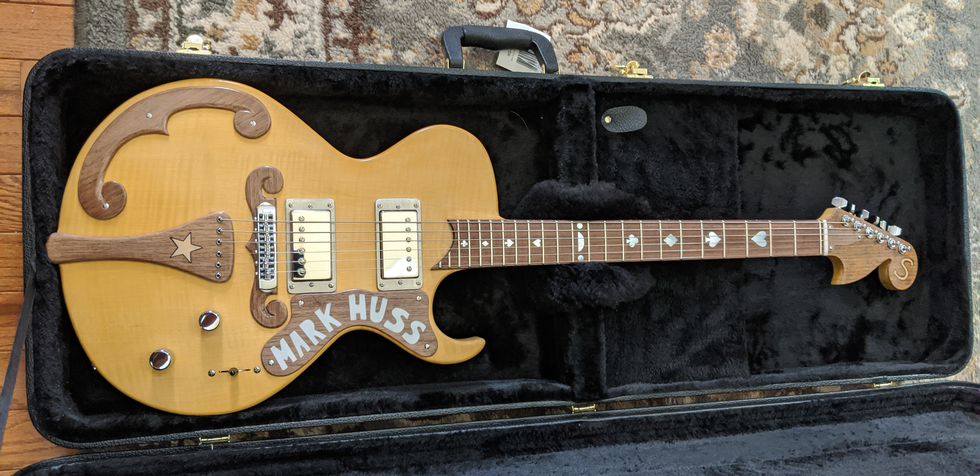Inspired by the The Great Guitar Build Off, an experienced builder challenged himself to turn a live-edge piece of cherry wood into a masterfully unique, grizzled beauty.
Kent Meloy
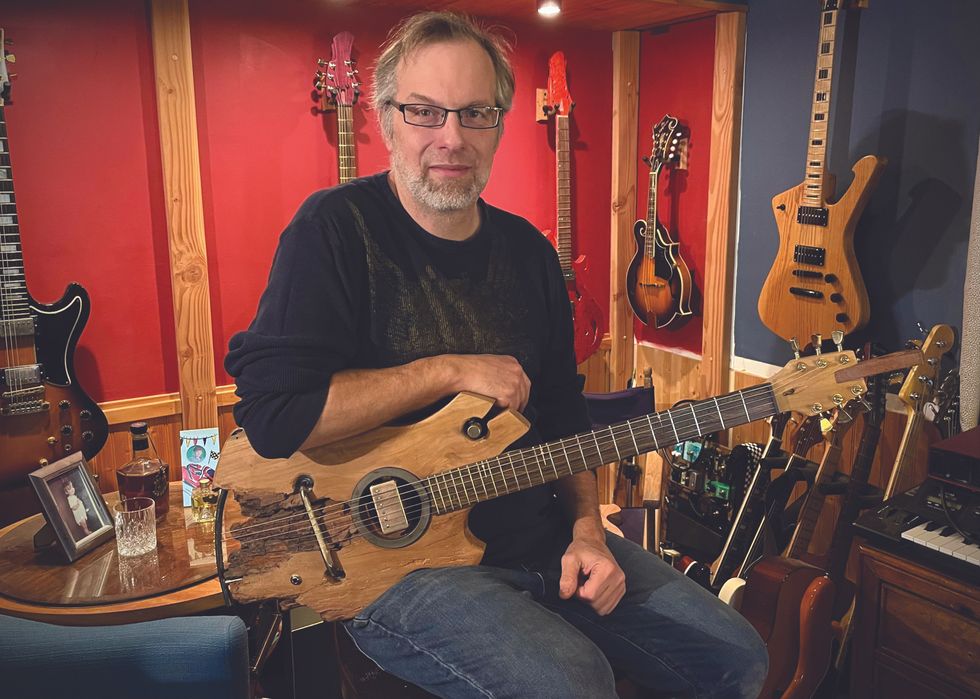
Hometown: Cincinnati, Ohio
Guitar: Live-edge Cherry Swamp Monster, nicknamed “Keith Richards”
For the past five or six years, I’ve been slowly building my guitar-building chops starting with a couple kits and then moving into my own scratch-built designs under the name Tunguska Guitars. Lately I’ve been intrigued by some of the builds I’ve seen featured on The Great Guitar Build Off run by Britain’s Crimson Guitars, and I’ve tried to start thinking outside of the norm.
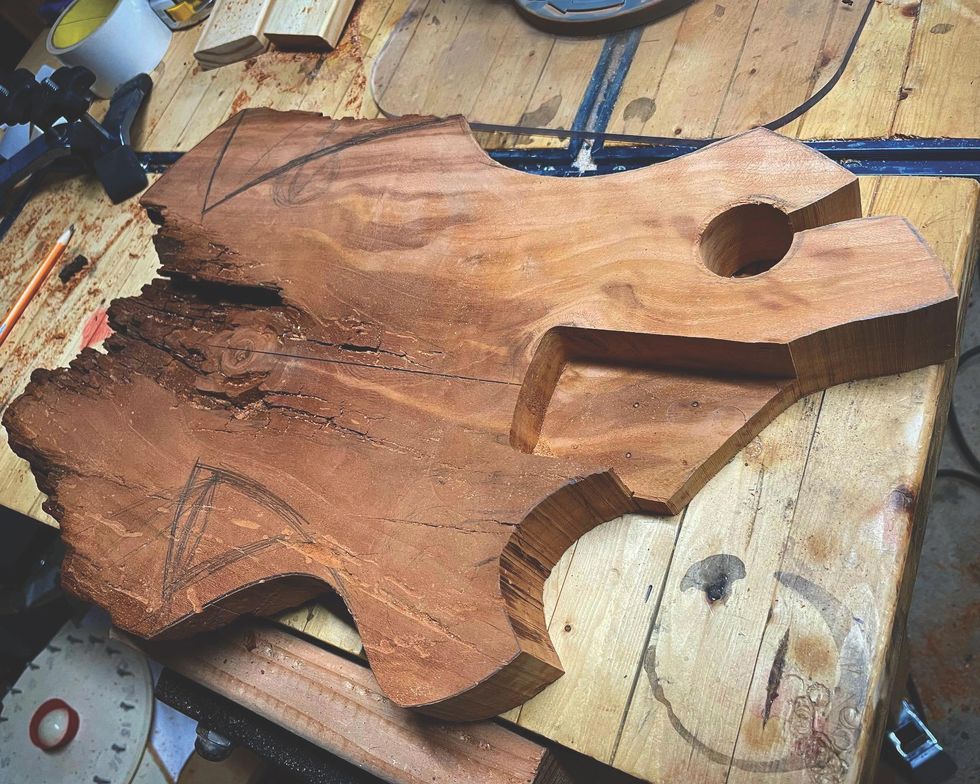
My brother-in-law has a bunch of 2" slabs of cherry wood that have been drying in a shed behind his house for a couple years. When we were down for a visit, he took me up to collect a few. This particular live-edge piece wormed its way into my heart, and I grabbed it, knowing it was probably useless for a guitar.
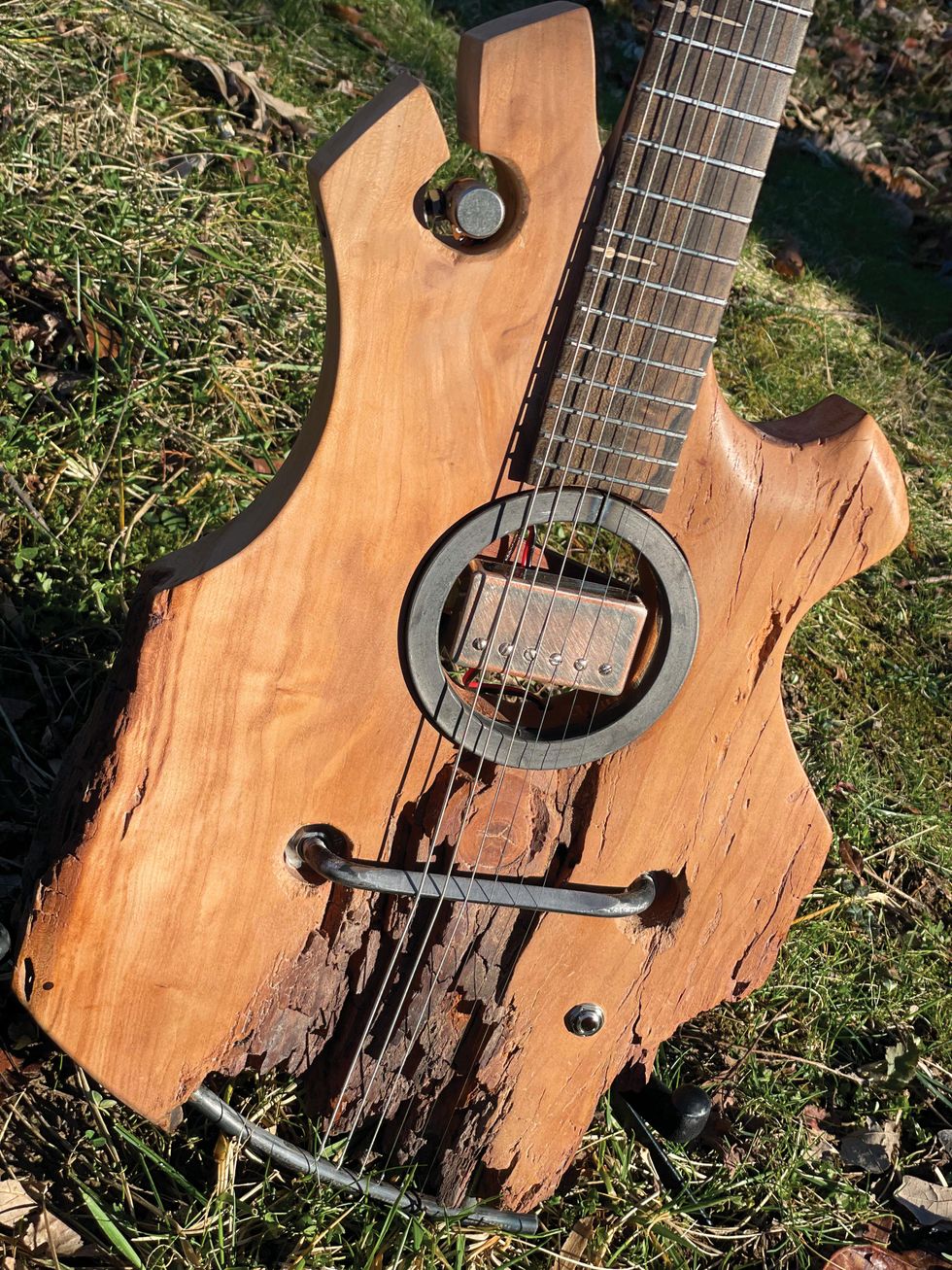
But once I got home, I kept thinking about how to solve the problems. The entire bridge/tailpiece area was completely unsuitable, and one thing I knew I did not want to do is fill it with resin. This thing needed to stay as raw, beat-up, and un-shiny as possible. There was barely enough wood to get a body and neck out of it, but I managed to get both.
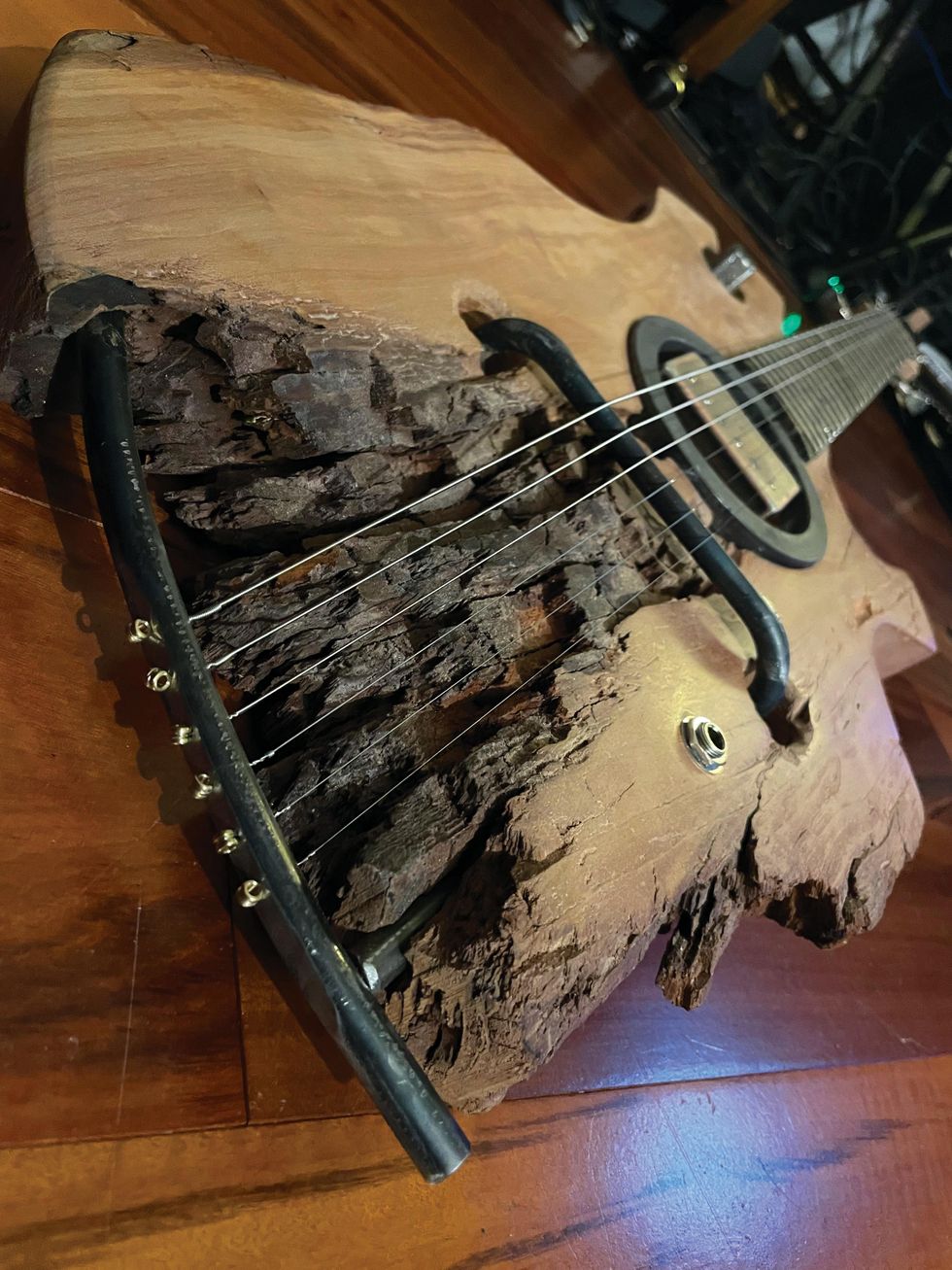
I decided the only way to solve the bridge issue was to fabricate something myself (if you can call it that), so I picked up a 3/8" steel rod and used a blowtorch to heat it up and make the necessary bends in the bridge, far enough apart that it literally “bridged” the canyon of disintegrating wood. I put threads on the mounting ends so I could install nuts on the top and bottom as a basic height adjustment. The 2-piece tailpiece was less drastic, but also did the trick by boring deep into the good wood for support.
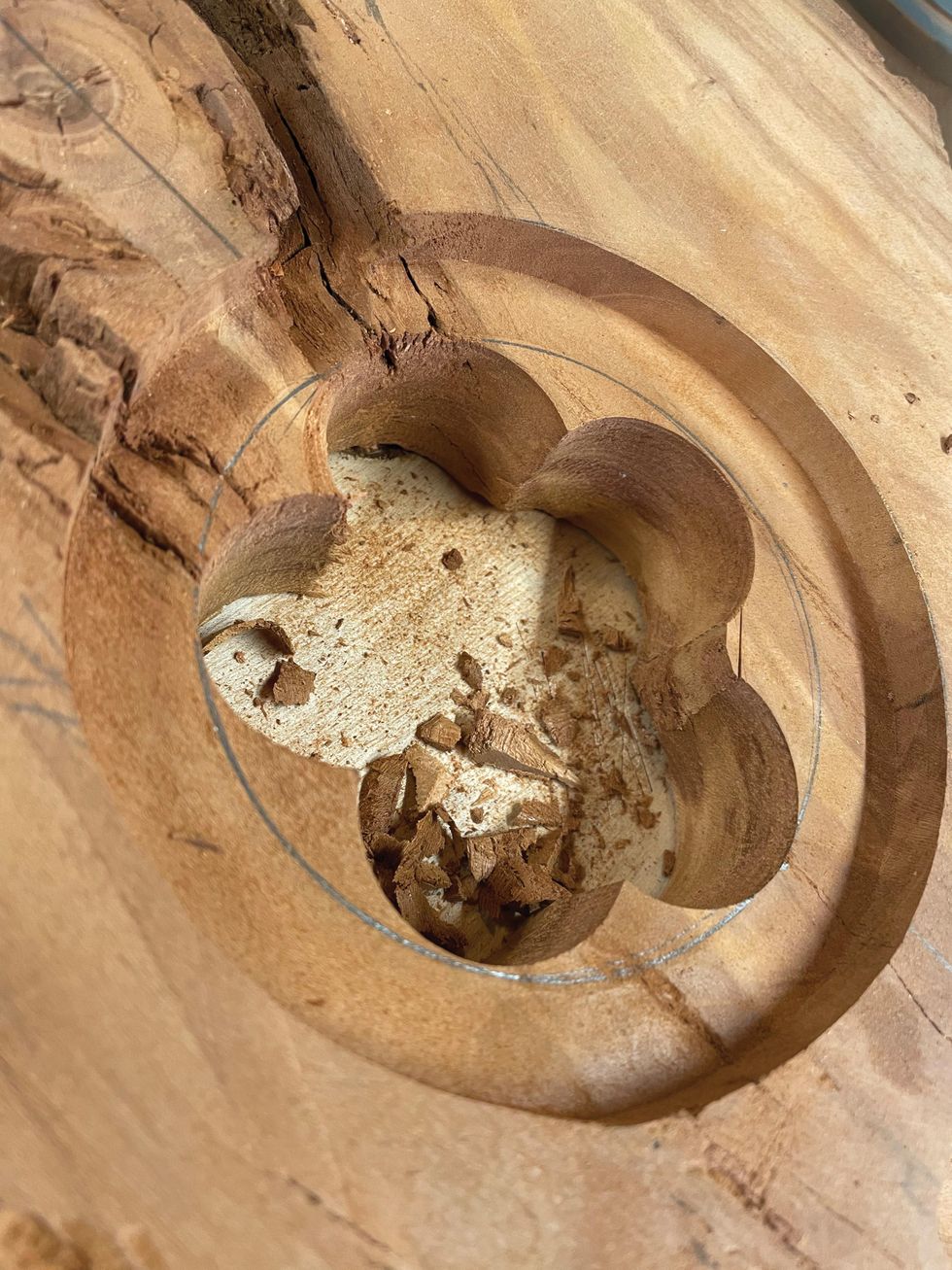
I decided the pickup mount would emulate an acoustic, boring all the way through the body and countersinking a steel ring for decoration with pickup mounting holes on the backside instead of the top, and I wanted a single volume control to hover in the upper horn’s decorative hole. This took a while and involved a short, threaded rod, three nuts, and a little bit of J-B Weld to get one of the nuts on the mini-pot.
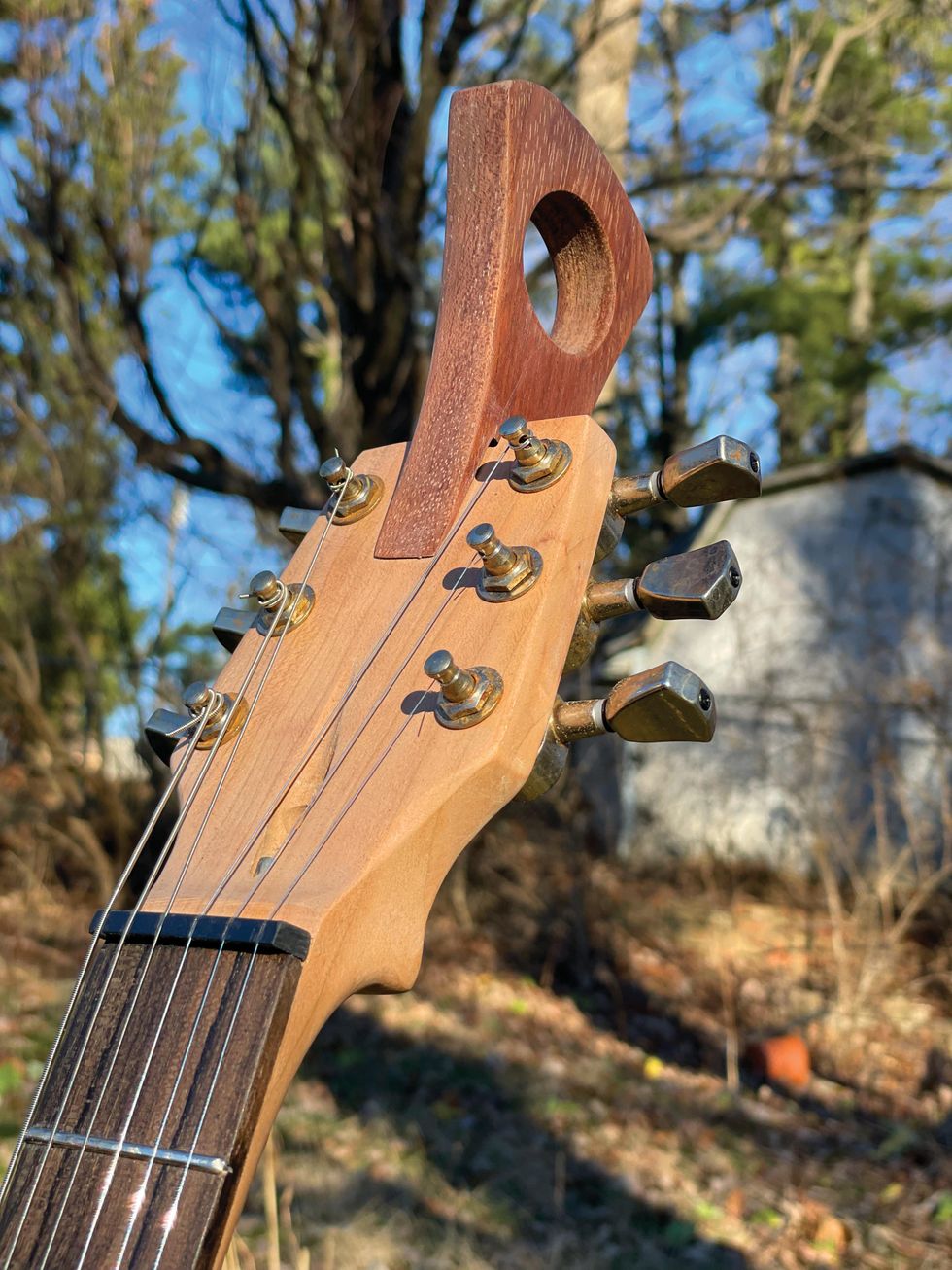
Once I got far enough into the process, I was calling it “The Nameless One,” but my friends started calling it “Keith Richards”–a grizzled, beat-up, true rock ’n’ roll survivor. I came to be completely okay with that assessment: It just feels perfect!
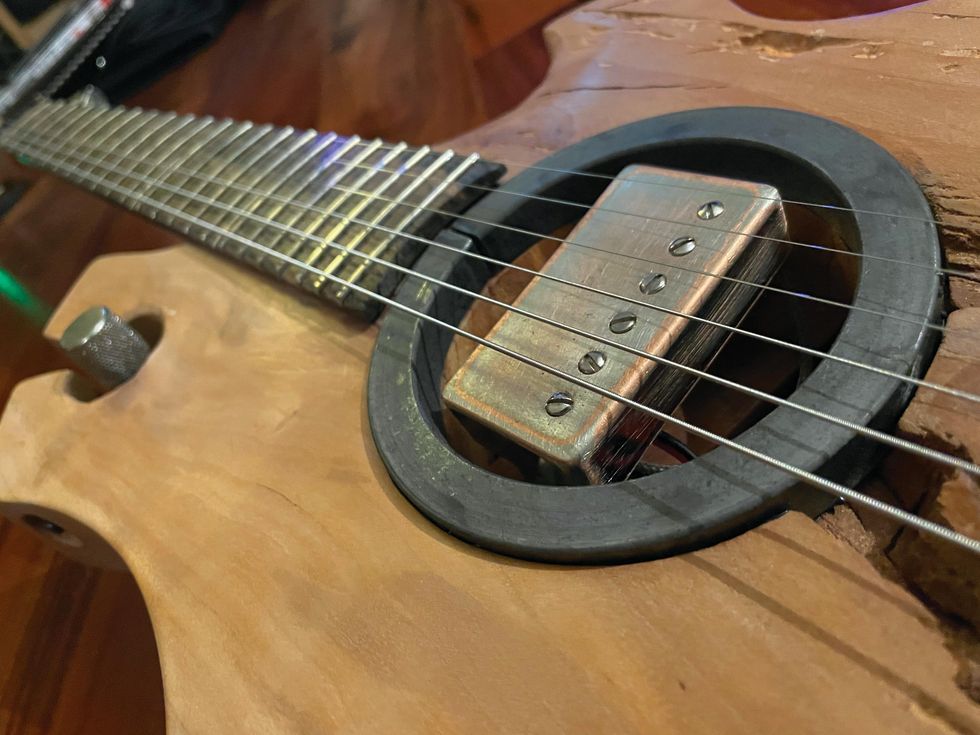
The pickup is a hand-distressed StewMac Golden Age Parsons Street humbucker. The fretboard is ziricote and the relic’d tuning machines and control knob came from GFS.
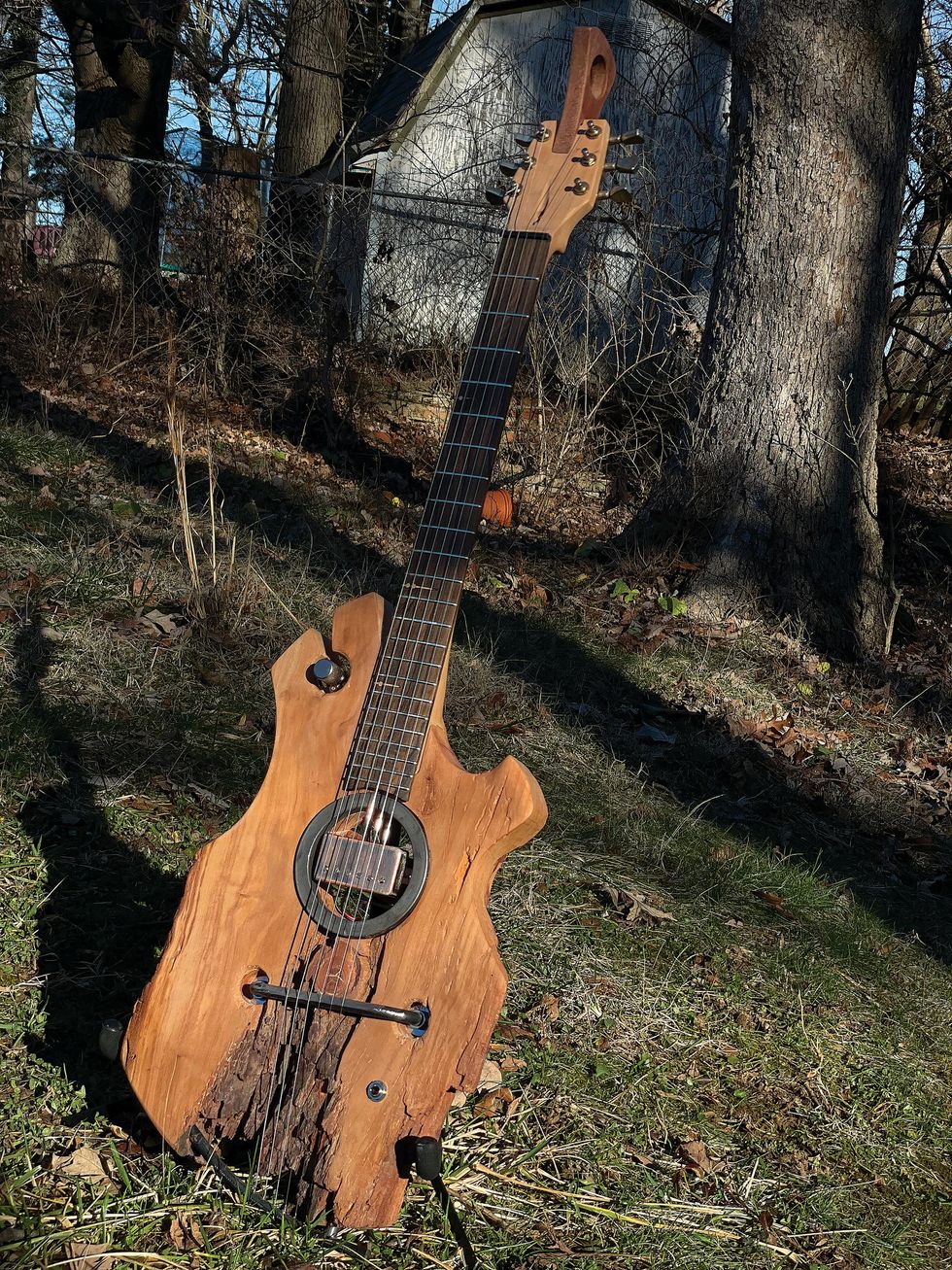
The thing sounds amazing—it’s very open and organic. Cranking up the distortion just a bit gives it a lovely swamp-’70s vibe. It completely surpassed my expectations, and I’m sure it’s Keith’s fault.
Send your guitar story to submissions@premierguitar.com.
